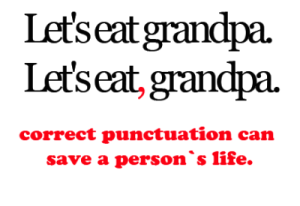Content marketing can be a very effective method to achieve your business goals, but it is difficult to master. Hence, you need to give your content the best chance of success by optimising it to be the best it can be.
Making a few small changes to your content can make a massive difference to its overall performance. Optimised content can increase traffic and click-through, and improve bounce rate and visibility. Optimised content can help you build brand authority and reputation and convert readers into loyal customers.
So, before you hit publish on your content, make sure you do these 10 simple yet effective things to optimise your blog posts for maximum impact across your whole marketing spectrum.
1. Answer Audience Questions
Your blog should be a valuable and reliable source for your target audience by answering questions they have. To decipher their questions, conduct market research or use a tool such as answer the public to discover their queries. You can then create high-quality content that matches user’s queries and provide relevant content with the answers they seek.
Creating high-quality articles that answer audience questions will help you build authority and build awareness in your industry. Quality content will also help you rank higher in search engines so you can be there to answer questions when users search. Whether users find you through Google or another avenue, useful content that helps your audience demonstrates your knowledge and authority and encourages readers to choose your service.
2. Improve Headline
Your headline should drive traffic, shares, and search results. Your headline is what is going to inspire a user to click on your content or ignore it, so it is important that your headline is eye-catching, easily scannable, and draws audience attention.
A content marketing tool like Coschedule’s headline analyser can help you improve your headlines to entice the reader to click on your article. Your headline should seek to address the question the audience has without being click bait. Power words and emotion words can compel a reader, and how-to style numbered lists headlines prove effective in getting a user to click on your headline.
3. Communicate Your Message
The best way to get your point across is to use simple language that your audience will understand. Avoid using jargon and trying to sound clever. Simply be concise and communicate your message in the clearest way possible. Simplicity is better – you don’t want to confuse readers, they need to easily understand the solution to their problems.
Get to the point and stay focused on that point. Everything you say should be focused on this point to answer your audience’s question. Use a simple format of introduction, explaining and expanding on the key points, and conclusion to sum up and tie it all together.
Remember, however, to make sure your content doesn’t bore your reader. You can do this by varying language and sentence length and making sure your reader wants to read on to find out the information they want. This could be through adding emotion, using humour, being personal, or being useful – but make it valuable.
4. Add Links
Use statistics, links and research from reputable sources throughout your content to back up your claims and provide evidence for your key points. Doing so will make your content more valid, reliable, and valuable. Citing authoritative sources will help you to build more authority as a leader and resource in your niche and encourages others to engage in your site.
You also need to link internally to other useful and relevant posts on your own site. This will encourage readers to stay on your blog to keep reading more useful information as you answer more of their questions, decreasing bounce rate and giving you a greater chance to convert readers into customers. This also adds links juice from your quality articles to your new article to help it rank higher.
5. SEO
Optimise your content for SEO. Start with using a range keywords that your target audience will use to search for your article, but don’t over-optimise and stuff keywords everywhere. Write for your human audience and your keywords will naturally fall into place.
Optimise your page titles and meta descriptions by inserting your keywords in a natural way as this will increase rank. Your page title and meta description are going to appear in search results so you need to describe what the content is about whilst enticing users to click on it, as this will increase traffic. For example, the page title and meta for this page is:

Creating valuable, quality content will also help your link building efforts and increase visibility in search engines, as naturally more relevant, quality resources will link to you if your content is useful to them.
6. Add Visuals
Adding visuals and media to your content is a great way to give your blog posts a boost. We like visual media so much that articles with images get 94% more views. So, if the image or video is relevant and adds value to your content, add some media to help illustrate your point.
Media is also effective at portraying information and helping it stick. When information is read with an image, 54% of the information is retained, as opposed to information displayed without an image, in which only 10% is remembered.
When uploading images and videos, however, make sure they do not slow down the load time of your site, or readers will get bored and click away without even viewing your content.
7. Edit Formatting
Once you’ve written your article it is important to make sure it is easy and enjoyable to read. You can do this by making changes to formatting and presentation, and this will ensure that readers stay on your content and encourages them to read it.
- Use a legible font and font size that is large enough and clear enough to decipher.
- Never write in large blocks of text as they can be daunting and difficult to digest. Split your article into more digestible bite-sized chunks of text with each new point given a new short paragraph.
- Use multiple headings and subheadings such as H1, H2, and H3 tags to break content into different sections.
- Add bullet point lists and numbered lists to illustrate shorter pieces of information.
- Use bold and italics to highlight important words and ideas.
- Formatting the page to a shorter column width makes your content much more scannable than wide columns of text.
- A blog layout with white space between paragraphs also improves the readability of your content.
8. Add CTA
Every goal of your content should be to convert readers into customers, and using effective calls to action can help you achieve this. Your CTA can help make your content actionable and let the prospect know the next steps to take.
You can use CTA buttons, banners within your content, use the sidebar for your CTA, or use a pop-up form, just make your call to action clear – but don’t plaster it all over your content to the extent that it disrupts your reader from accessing it or hinders their experience.
Whether it’s to sign up to an email, asking them to get in touch, asking to leave a comment, directing them to ask any questions, get a quote, follow on social, or share on social, make sure they know where to go next.
9. Edit and Proof
Never ever publish your content without editing or proofreading it first as any obvious mistakes can harm your brand’s reputation. A tool like Grammarly can help you check for spelling and grammar mistakes, or you can hire a professional to give you a hand.
Typos can be difficult to spot, and we all make them, so going over once or twice with attention to detail or asking a friend to read through can be beneficial. Make sure you know how to use punctuation – never underestimate the power of the comma, they save lives…

Getting a fresh pair of eyes on your content by asking for another’s perspective, coming back to it at a later date, or reading out loud can help you identify weak areas and reduce fluff to make sure your article reads well and is polished to the best it can be.
10. Distribute and Promote
One of the easiest mistakes to make with content marketing is to work hard writing your content, and then leave it to stagnate on your blog, hoping it gets found by prospects. Remember, you need to market your content by distributing and promoting it to all of the available platforms to give it the best chance of being viewed, enjoyed, and shared by your audience.
Here are just a few ways you can promote your content:
- Tweet it and retweet it
- Post it to Facebook
- Post to Google +
- Share it on Linkedin
- Feature it in your email newsletter
- Ask your team to post it to their personal social media profiles
- Pitch to influencers and bloggers in the industry who can share your content
- Submit it as a guest post to bloggers in your industry
Optimise Your Content
So, before you press publish on your next blog post or piece of content, ensure you go through this list of 10 simple but very effective things – answer audience questions, improve your headline, communicate your message, add links, optimise for SEO, add visuals, edit formatting, add a CTA, edit and proof, and promote it.
Optimising your content in this way can improve traffic, click-through, bounce rate and visibility. It can help you build brand authority, reputation, and convert readers into customers. It will ensure your content is the best it can be to get the best results it can.
If you have any questions regarding optimising your content or any other aspect of content marketing, get in touch and we’ll be happy to help. Remember to follow us on Facebook, Twitter and Linkedin for more content marketing tips and advice.







One Response
Sage advice. 🙂